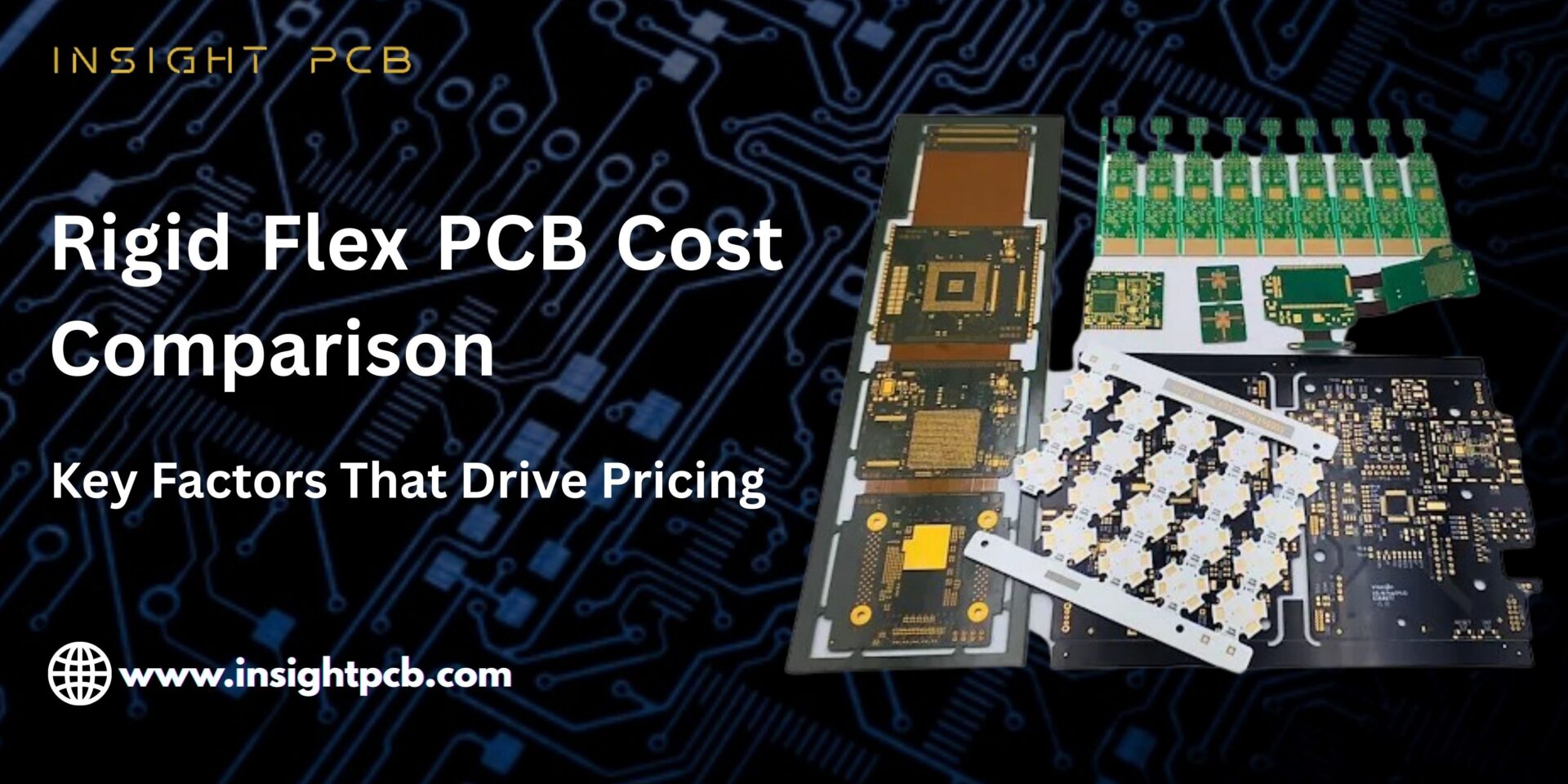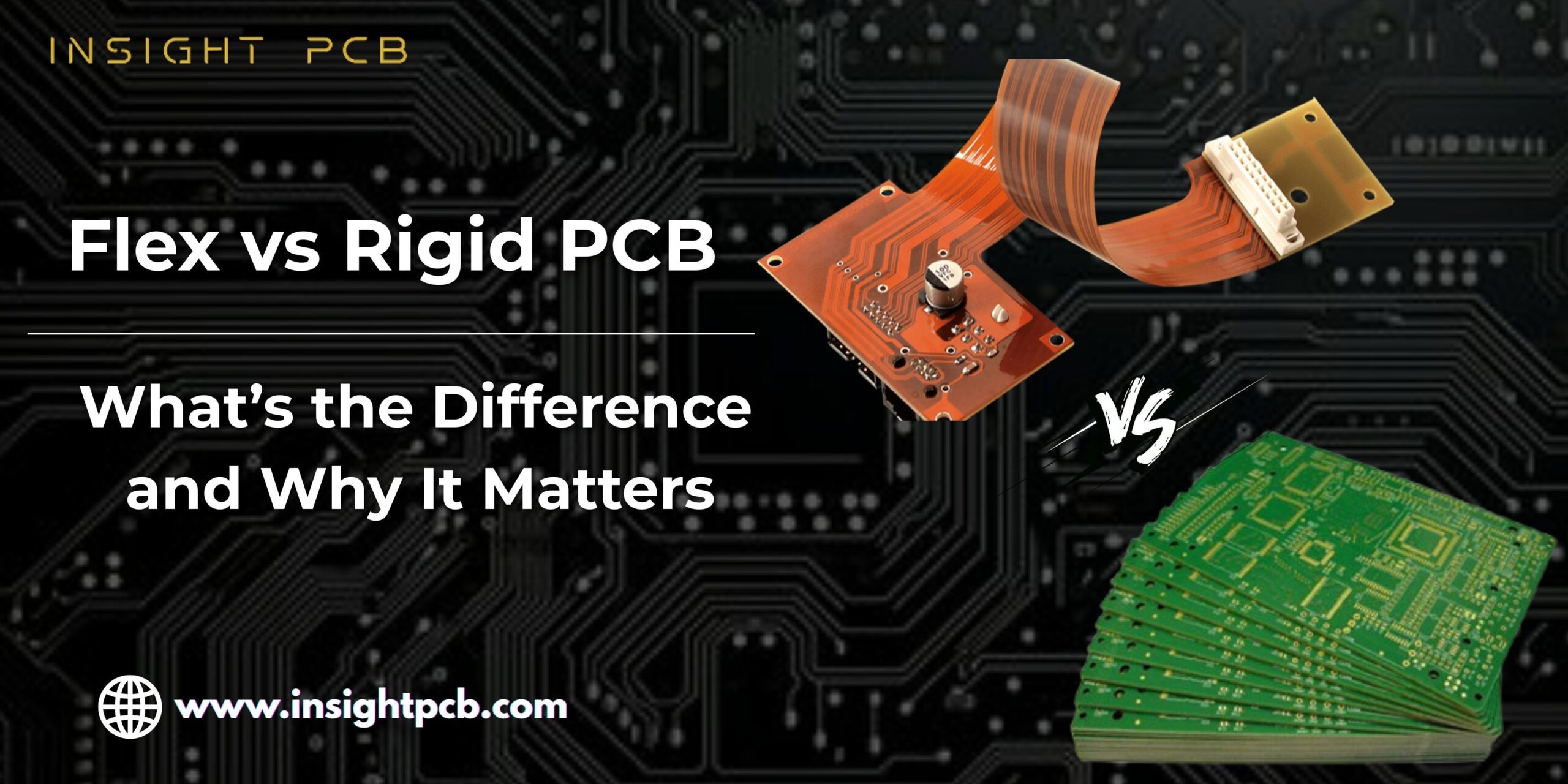
Rigid Flex PCB Cost Comparison: Key Factors That Drive Pricing
If you’ve opened a smartwatch or a medical device before, you may have wondered how all of the electronics and components fit inside. If so, you were likely looking into a rigid-flex PCB. Rigid-flex PCBs combine sections of rigid PCBs and flexible sections into a single piece.
Because rigid-flex PCBs are great for tight spaces and complex shapes, they have become more common in electronic design. But anyone who has costed out PCBs knows they are expensive. What makes rigid-flex PCBs more costly than regular PCBs?
Here’s what goes into the cost. We will break it down with a straightforward real-life rigid flex PCB costing comparison and its main drivers.
The Difference with Rigid Flex
We need to thoroughly understand what distinguishes a rigid-flex PCB from other types before discussing the price. They are laminated into a single stack-up, enabling 3D configurations with better space utilization and fewer interconnects. The higher cost is due to the technical advantages and the complexity of the manufacturing process.
The conflict came solely from technical benefits, as the procedure is complex, and this is where costs began to diverge.
Factors Affecting the Cost of a Rigid-Flex PCB
Not all rigid-flex PCBs are alike. Their price depends on several factors, some of which relate to technical aspects, while others relate to scale and design. Key considerations are:
1. Number of Layers
The higher the number of layers, the greater the time and materials involved in manufacturing. Rigid-flex boards can range from simple 2-layer configurations to 12 layers or more, depending on the high-end application requirements. Each additional layer adds:
- Material usage (rigid + flexible substrates)
- Precision of alignment when lamination
- Processing time when etching and drilling
Tip: If your design can operate with fewer layers, it can save a lot of money.
2. Flex-to-Rigid Ratio
How much of the board is flexible and how much is rigid? More flex area usually equals more polyimide (an expensive material) and more process steps in fabrication.
- More flex area = more cost
- More rigid parts = slightly less overall price
Additionally, including stiffeners to support certain pieces in the flexible section can contribute to a slight price increase.
3. Board Size and Shape
Bigger boards require more raw materials. However, strangely, tiny boards with odd or one-off shapes can also increase the cost because of:
- Finer routing
- Increased scrap levels when cutting
- Tooling specific to non-standard profiles
Keep your design simple and geometrically straightforward if you’re working on a budget.
4. Design Complexity
If your layout contains close tolerances, high-density routing, or special characteristics (such as controlled impedance), be prepared to pay extra. These issues influence:
- Fabrication time
- Inspection steps
- Requirement of sophisticated manufacturing equipment
High-density interconnects (HDI) or blind/buried vias also contribute to the overall price.
5. Staggered vs. Symmetrical Stack-Up
Rigid-flex PCBs tend to employ staggered constructions, where flexible layers do not pass through all the rigid portions. This conserves material but introduces engineering complexity.
Symmetrical stack-ups are easier to produce but may require more material overall.
This is often a tradeoff between design needs and manufacturing preferences. Your PCB fabricator can advise on what’s most efficient based on your specs.
6. Production Volume
Like most manufacturing processes, quantity matters. Prototyping or low-volume production typically has:
- Higher per-unit cost
- More manual intervention
- Set-up costs spread over fewer units.
- In contrast, high-volume runs benefit from:
- Better material optimization
- Lower tooling cost per unit
- Streamlined assembly and testing
If you intend to scale, it’s a good idea to request pricing ranges at various volumes at the quoting phase.
7. Turnaround Time
Want your boards in a week? You’ll likely pay for it. Rush fabrication always incurs a premium because it can entail:
- Overtime labor
- Your order is getting a higher priority.
- Rushing shipment of materials
- Planning can keep expenditures in check.
8. Testing and Quality Control
Rigid-flex boards are used in demanding applications, sometimes where failure isn’t an option. So additional testing, such as:
- Electrical testing
- X-ray or AOI inspection
- Reliability testing for flex cycles
It is included in the quote. Additional testing yields greater quality assurance, but comes at a higher cost.
Rigid Flex PCB Cost Comparison
Here’s a typical rigid flex PCB cost comparison with others:
| PCB Type | Relative Cost | Notes |
| Single-layer FR4 | Low | Good for simple circuits |
| Multi-layer FR4 | Medium | Common for moderate complexity |
| Flex-only PCB | Medium-High | Priced higher due to polyimide |
| Rigid-Flex PCB | High | Premium pricing for advanced design |
Rigid-flex is likely to be 2 to 5 times more costly than an equivalent rigid PCB design, based on complexity and volume. But that expense is most often offset by the advantages of space savings, ruggedness, and reliability.
When Is the Higher Cost Worth It?
If you have:
- Compact product enclosures
- Moving parts or repeated flexing
- High-reliability applications
- A need to save connectors and wiring
Then, rigid-flex boards can cut costs elsewhere in your product design:
- Reduced assembly steps
- Reduced mechanical contacts (i.e., reduced failure points)
- Less internal wiring, saving space and time
Tips to Optimize Rigid-Flex PCB Costs
Looking to make your design cheaper? Try these few things:
- Keep to standard panel sizes.
- Use symmetrical stack-ups when possible.
- Restrict the flex area to only what is necessary.
- Avoid using unnecessary features, such as HDI, unless required.
Speaking of which, please discuss this with your fabricator in advance. They often suggest design changes that are less costly but not detrimental to performance.
Final Thoughts
Rigid-flex PCBs are more costly because each board is engineered and fabricated with utmost precision. Investing in quality at this stage is worth it. When the priority is reliability, space-constrained design, and performance, then this investment pays off later.
To stay ahead of the curve for rigid flex PCB cost comparisons, learn the factors that govern them so that you can make informed design decisions early. Shifting a few things back and forth, consulting with your manufacturer, and strategizing your volumes enable you to achieve the desired product impact. This is all without incurring wasteful expenses.
For all technical questions and support in your next project, Insight PCB can help you design smarter from day one.




